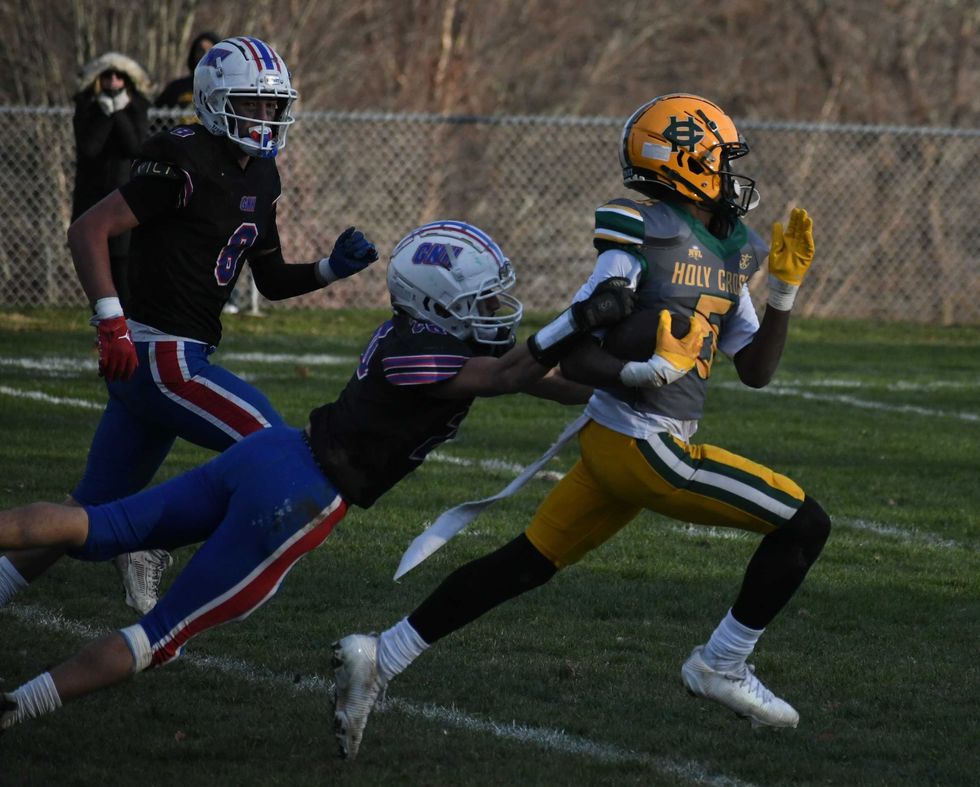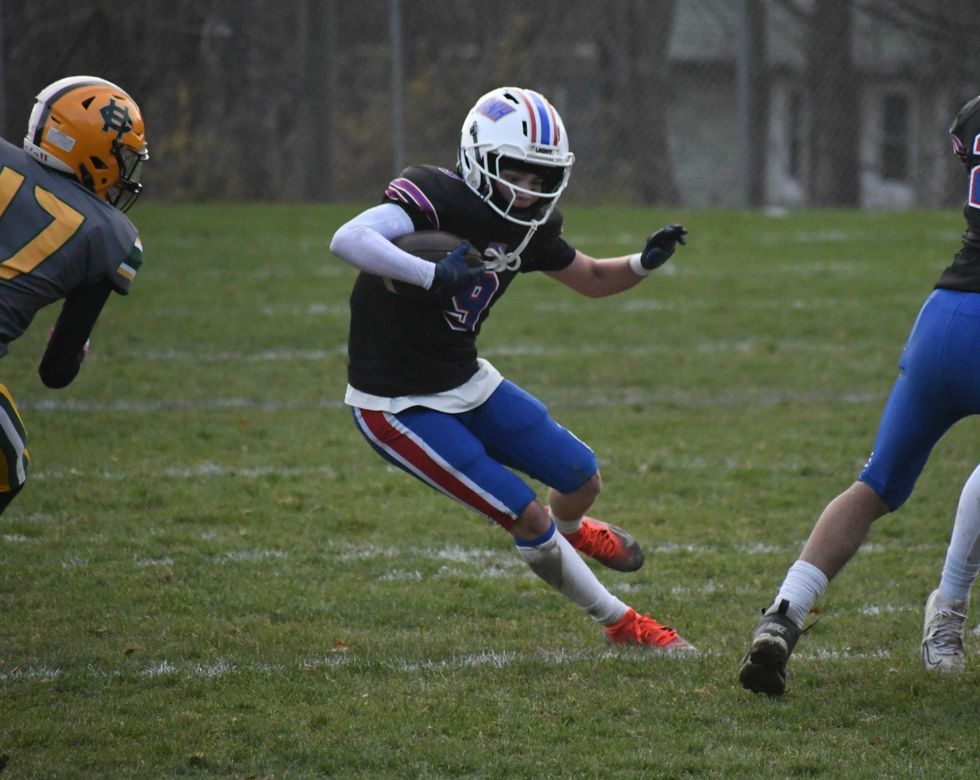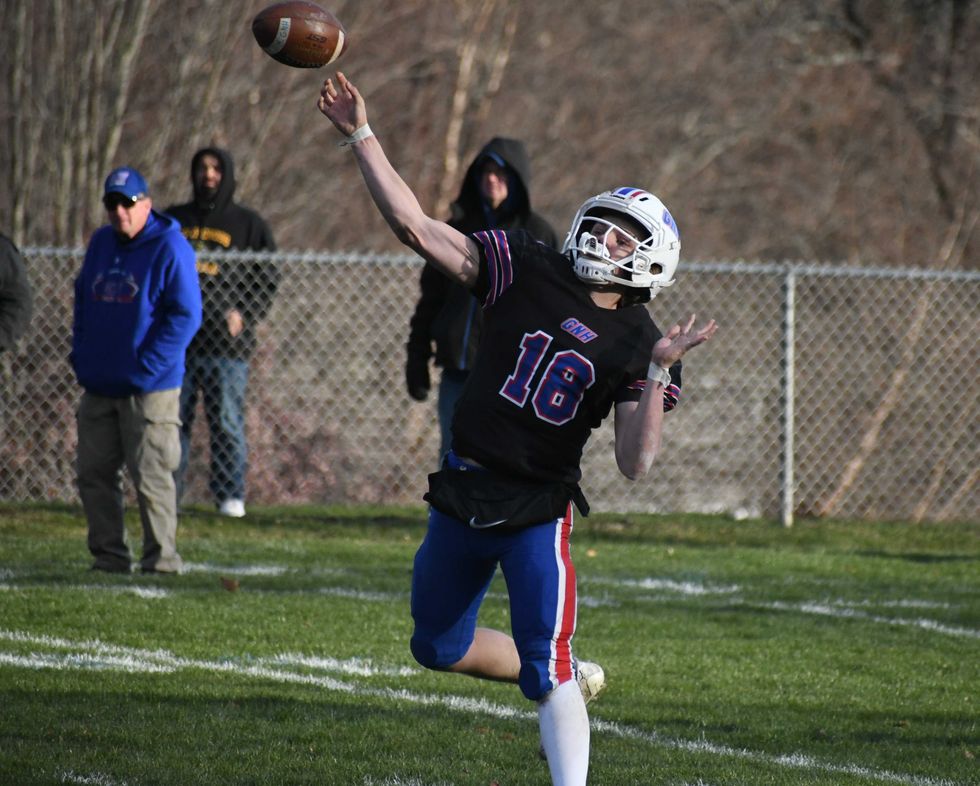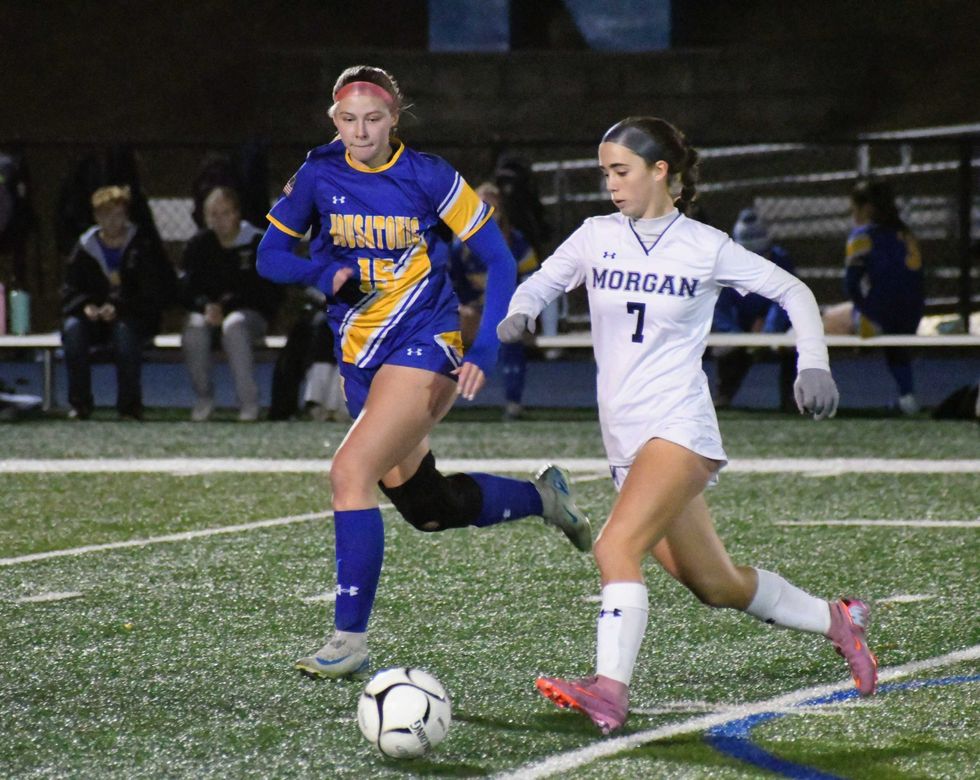Finding Myself — And a Network of South County Trails

Jenny Hansell and her daughter Abbey at the top of Spruce Hill, at the end of BNRC’s Hoosac Range trail in North Adams, Mass. Selfie photo by Jenny Hansell

We are an indoors people, my family. A walk after a big Thanksgiving dinner was the extent of my childhood experiences outdoors with my parents. But they sent me to summer camp, where I learned to light fires and pitch tents. Raised in a big city, I loved being in the woods.
In college I considered taking a class called Local Flora, but my dad laughed and said, “Why would you do that?” So I didn’t.
I spent most of the years since my camp days sitting in front of a computer. A few years ago, after 17 years as executive director of the North East Community Center in Millerton, N.Y., I had the good fortune to land a job at the Berkshire Natural Resources Council (BNRC) in Pittsfield, Mass. A countywide land trust, BNRC maintains more than 50 miles of trails, and I made a commitment (out loud, in an interview) to hike all of them my first summer on the job.
It did not go well. Overweight and out of shape, I was eager to fit in with the lean outdoorsy types I was working with. I pushed too hard and badly injured my Achilles tendon.
But gradually I got out more, exploring BNRC trails from Egremont to North Adams. BNRC launched a trails app, and I loved using it — still a bit uncertain out in the woods, I found it comforting to see my blue dot moving on the trail.
My first big test after my ankle healed was an 8-mile staff hike over Yokun Ridge, which connects Pittsfield to Lenox. The trail will officially open next spring and will be the first leg of BNRC’s ambitious project, The High Road, which will be a network of trails connecting town to town throughout the Berkshires.
I was worried that day that I couldn’t hike 8 miles, that colleagues would have to stop and wait for me, or that I’d have to turn back. But I made it: up to the ridge, where the reward was a panoramic view all the way to the Catskills, and back down.
Hiking has become my solace. It’s my therapy, my social time, my time away from phones, politics, pandemics. A few hypnosis sessions helped me take off the weight, and I feel healthier than I have in many years.
I took the job at BNRC because I wanted to make some bit of difference in the climate fight. Now, more than ever, I appreciate the fields and forests, the wetlands and ridgetops that surround us in the Tristate area.
Find all the trails at ww.BNRC.org and the Berkshire Trails app on the Google and Apple app stores.
Jenny Hansell is president of the Berkshire Natural Resources Council.
Norfolk fire and ambulance crews responded to a one-vehicle crash on Route 272 (Litchfield Road) shortly after 6 p.m. Friday, Nov. 14.
NORFOLK — A 60-year-old Oregon man is dead after a single-car crash Friday, Nov. 14, according to Connecticut State Police.
Kevin Scott, of Portland, was driving a Ford Escape southbound on Route 272 (Litchfield Road) when he exited the roadway while negotiating a curve and struck a utility pole. The Ford rolled onto its side and the airbags deployed. No other vehicles were involved in the crash and there were no passengers in the car.
Jon Barbagallo, public information officer for Norfolk emergency services, said the roof of the vehicle had to be cut open so first responders could reach the driver. The extrication took about 10 minutes.
Scott was transported by Norfolk Ambulance to Charlotte Hungerford Hospital, where he succumbed to his injuries.
The utility pole snapped at its base.
Anyone with information on the crash is asked to contact Troop B at 860-626-1820.
WINSTED — Holy Cross High School won 36-20 against the Gilbert/Northwestern/Housatonic co-op football team Saturday, Nov. 15.
The hard-fought contest was won in the air. Holy Cross QB Brady Lombardo completed 16/31 passes for 309 yards with five touchdowns and one interception.
GNH pounded the ground game for a total of 209 rushing yards. Cole Linnen, Jaden Hoffman and Trevor Campbell each ran in one TD. Wes Allyn caught an interception on defense.

The result did not alter Naugatuck Valley League (Tier 1) standings with Holy Cross (6-3) remaining in third place and GNH (4-5) remaining in fourth place. Seymour and Woodland Regional sit tied at the top with undefeated 9-0 records ahead of their showdown Nov. 26.
GNH scored first against Holy Cross on a seven-yard rush by Jaden Hoffman. Holy Cross responded with three quick reception touchdowns -- two by Dae’Sean Graves and one by Devonne Drake -- before halftime, creating an 18-7 lead at the break.

In the third quarter, Trevor Campbell scored for GNH and Nathan Craft scored for Holy Cross.
Holy Cross added two more reception TDs in the final quarter with one by Aaden Hall and another by Drake. GNH’s Linnen scored a 31-yard touchdown run to bring the final score to 36-20.
The final regular season game for GNH will be the Turkey Bowl against St. Paul Catholic High School Wednesday, Nov. 26, at 6 p.m. in Bristol.

NEWTOWN — Housatonic Valley Regional High School's girls soccer team's state tournament run concluded in the semifinals with a 4-2 loss to Morgan High School Wednesday, Nov. 12.
The final four finish was the deepest playoff push for Housatonic since 2014. Lainey Diorio scored both goals and keeper Vi Salazar logged 10 saves in the semifinal game.
"It's an unfortunate loss but you know they played their hearts out," said HVRHS coach Don Drislane. "Awesome season."

It was the final soccer game for HVRHS’s two senior captains: Ava Segalla and Madeline Mechare. Segalla ended her varsity career as the leading goal scorer in school history with a total of 133.
Morgan's size and speed on the field helped the Huskies dominate possession and earned them a bid to the Class S girls soccer championship for the second year in a row. In 2024, Morgan lost in penalty kicks to Coginchaug High School.
This year, the Huskies will face Old Saybrook High School in the Class S championship game at Trinity Health Stadium in Hartford on Saturday, Nov. 15 at 10 a.m. Old Saybrook defeated Canton High School 1-0 in the semis.